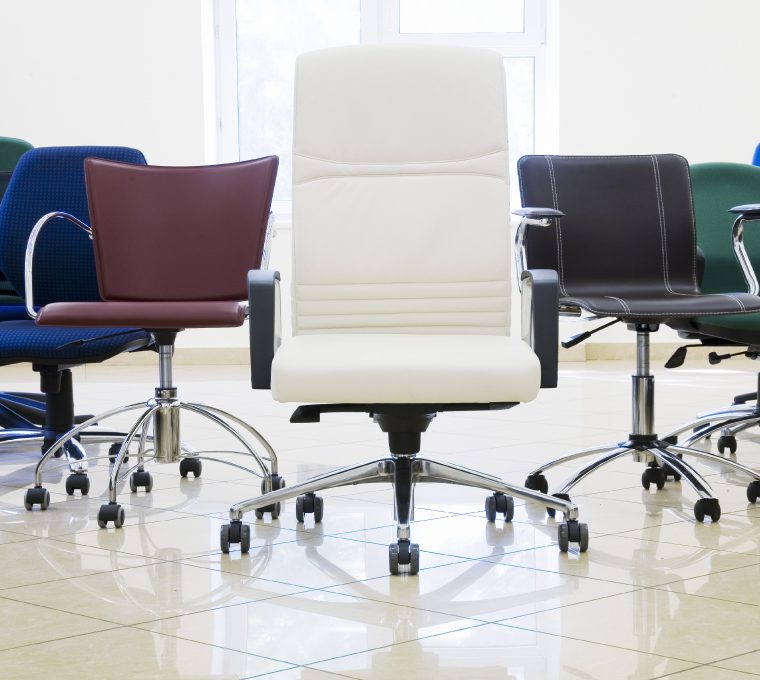How many times do you think about your chair when you sit at your desk? Most people take their desk chair for granted, but it’s an important piece of furniture that can affect your health and productivity. Understand the benefits of a good chair and the three types of chairs as you choose the best office chair for your needs.
WHY YOU NEED A GOOD OFFICE CHAIR
Sitting all day may be a necessity of your job or part of your daily routine, and you owe it to yourself to sit in an ergonomic chair. The wrong chair can cause or increase workplace injuries, joint, neck, or back pain, herniated discs, numbness, and carpal tunnel. An uncomfortable chair also affects your productivity and focus as you work. For better health, well-being and efficiency, choose a comfortable chair that’s specific to you, helps you maintain the correct posture, and supports your entire body.
HOW TO FIND THE RIGHT CHAIR FOR YOU
Office chairs are available in hundreds of designs and styles. When shopping for a chair, you’ll notice three main categories: low back chairs, mid and high back office chairs:
- The low-back office chair gives you lower and mid-back lumbar support. What’s more, it is versatile if you need to lean forward as you work, stand up and move frequently.
- The mid-back office chair supports your spine’s natural curve and protects your lower and middle back as it prompts you to sit straight.
- The high-back office chair supports your upper back, shoulders and neck, and is designed for comfortable all-day use.

Whether you choose the low-, mid- or high-back chair, it should have several ergonomic features that improve your posture, protect your health, and increase your productivity:
- Lumbar and back support. The chair’s backrest should prevent rather than cause back pain. To do that, it should curve with your back. It should also adjust so you sit forward slightly and don’t slouch. The right back support for an office chair also includes a backrest that measures 12-19 inches wide.
- Adjustable armrests. You want your arms to relax and not be tense as you sit. Otherwise, you’ll feel pain in your wrists, shoulders and neck. Adjustable armrests change height and width to provide maximum support for your arms and allow your wrists to relax.
- Adequate seat depth. Relieve back pain and improve circulation when you adjust the seat depth: i.e., the distance between the front and back edges of your seat. Test the depth by sitting back in your chair. Your full fist should fit between the front edge of your chair and your calves for maximum comfort.
- Firm footing. You prevent circulation problems, sit up straighter and maintain the proper posture throughout the day when your feet are firmly planted on the floor. Choose a chair with an adjustable seat height, and use a footstool if necessary as you maintain firm footing.
- Secure base. An ergonomic office chair has a five-point base and casters. This way, it supports your weight and allows you to maneuver easily around the room without straining, turning or twisting your body to reach items on your desk or talk to co-workers.
- Adjustable for your needs. The correct office chair for you adjusts to your proportions and needs. You can raise the seat height and tilt, move the back and armrests, and adjust the lumbar support. If any part of the chair is not adjustable, consider a different chair.
Are you ready to improve your health and productivity? Purchase a new office chair: Concept Seating offers a variety of low-back, mid-back, and high-back ergonomic options designed for your specific needs. Contact us today for more information on finding the best office chair for you.